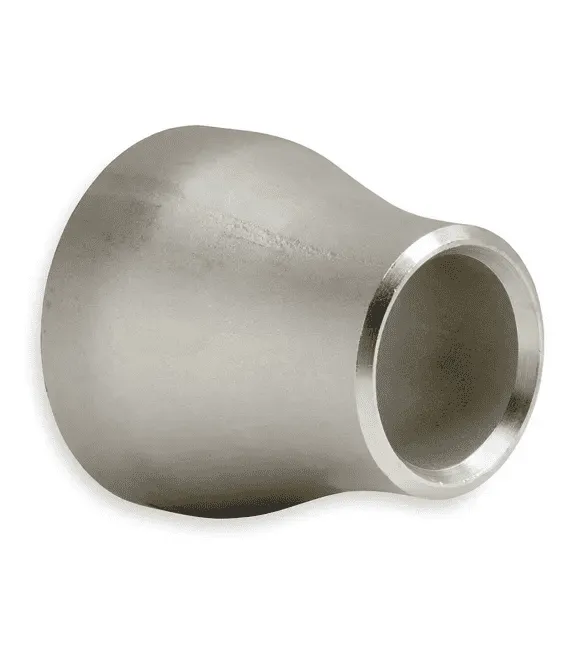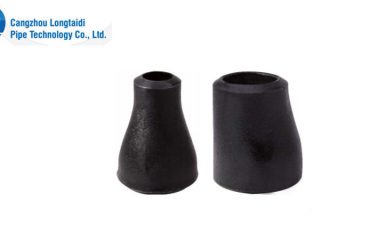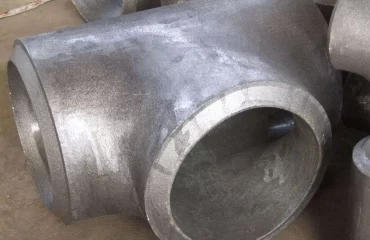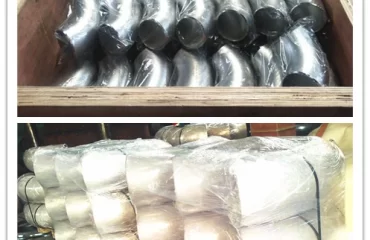
Tren dan Inovasi Masa Depan
Industri stainless steel terus berkembang, didorong oleh kemajuan dalam ilmu material, teknologi manufaktur, dan tuntutan akan peningkatan kinerja di lingkungan ekstrem. Berikut adalah beberapa tren dan inovasi masa depan yang dapat berdampak pada produksi dan penerapan peredam baja tahan karat ASTM A403 WP.
Paduan kinerja tinggi
Pengembangan Paduan kinerja tinggi adalah tren yang signifikan. Bahan -bahan ini direkayasa untuk menawarkan ketahanan korosi yang unggul, Kekuatan, dan daya tahan di lingkungan yang semakin keras.
- Baja tahan karat Superaustenitik: Versi peningkatan nilai austenitik tradisional, seperti AL-6XN, menawarkan resistensi yang lebih baik terhadap pitting dan celah korosi.
- Baja tahan karat dupleks dan super dupleks: Menggabungkan sifat terbaik baja austenitik dan feritik, Bahan -bahan ini memberikan kekuatan dan ketahanan yang sangat baik terhadap retak korosi stres.
Manufaktur Aditif
Manufaktur Aditif (AM), umumnya dikenal sebagai pencetakan 3D, sedang merevolusi produksi komponen yang kompleks, termasuk peredam stainless steel.
- Fusi bedeng bubuk (PBF): Teknik AM yang populer untuk membuat komponen baja tahan karat presisi tinggi lapis demi lapis dari bubuk logam.
- Deposisi Energi Terarah (DED): Cocok untuk memperbaiki dan menambah material pada komponen yang sudah ada, memperpanjang umurnya dan mengurangi limbah.
Teknik Perlakuan Panas Tingkat Lanjut
Inovasi di teknik perlakuan panas sedang meningkatkan sifat-sifat reduksi baja tahan karat.
- Karburasi Suhu Rendah (LTC): Meningkatkan kekerasan permukaan dan ketahanan aus tanpa mengurangi ketahanan korosi.
- Proses Annealing Tingkat Lanjut: Menghasilkan kontrol yang lebih baik atas sifat mikrostruktur, meningkatkan sifat mekanik dan ketahanan korosi.
Manufaktur dan Industri Cerdas 4.0
Integrasi dari Industri 4.0 prinsip, termasuk IoT (Internet Segalanya), data besar, dan AI (Kecerdasan Buatan), sedang mengubah proses manufaktur.
- Pemeliharaan Prediktif: Memanfaatkan sensor dan analisis data untuk memprediksi dan mencegah kegagalan peralatan, memastikan produk yang konsisten kualitas.
- Pabrik Cerdas: Menerapkan sistem dan robotika otomatis untuk meningkatkan presisi, Efisiensi, dan kemampuan beradaptasi di jalur produksi.
Keberlanjutan lingkungan
Keberlanjutan lingkungan menjadi semakin penting dalam industri stainless steel.
- Daur Ulang dan Ekonomi Sirkular: Menekankan daur ulang baja tahan karat untuk mengurangi konsumsi bahan baku dan dampak lingkungan.
- Proses ramah lingkungan: Mengembangkan proses manufaktur yang meminimalkan konsumsi energi dan emisi, seperti menggunakan sumber energi terbarukan dan teknik produksi yang lebih bersih.
Studi Kasus
Studi Kasus 1: Pabrik Pemrosesan Kimia
Tanaman pemrosesan bahan kimia utama membutuhkan peredam stainless steel yang dapat menahan lingkungan yang sangat korosif yang melibatkan asam sulfat dan klorida. Pabrik memilih WP904L untuk ketahanannya yang luar biasa terhadap bahan kimia yang keras ini.
Pelaksanaan:
- pemilihan bahan: WP904L dipilih untuk nikel tinggi, molibdenum, dan konten tembaga.
- Proses manufaktur: Pereduksi diproduksi menggunakan penempaan tertutup, diikuti dengan solusi anil dan electropolishing untuk meningkatkan ketahanan korosi.
- Pertunjukan: WP904L Reducers menunjukkan kinerja yang sangat baik, dengan perawatan minimal dan downtime selama beberapa tahun.
Studi Kasus 2: Platform minyak lepas pantai
Platform minyak lepas pantai membutuhkan peredam yang kuat yang mampu menahan tekanan tinggi, suhu, dan lingkungan air laut yang korosif. WP316L dipilih untuk sifat seimbangnya.
Pelaksanaan:
- pemilihan bahan: WP316L dipilih karena ketahanannya terhadap korosi akibat klorida dan sifat mekanik yang baik.
- Proses manufaktur: Penempaan dan pemesinan selanjutnya digunakan untuk memproduksi reduksi, diikuti dengan pengawetan dan pasivasi untuk mengembalikan lapisan pelindung kromium oksida.
- Pertunjukan: Peredam WP316L bekerja dengan andal dalam kondisi yang sulit, memastikan integritas sistem perpipaan.
Studi Kasus 3: Fasilitas Pembangkit Listrik
Fasilitas pembangkit listrik memerlukan peredam tahan suhu tinggi untuk komponen boilernya. WP321 dipilih karena stabilitasnya pada suhu tinggi dan ketahanan terhadap korosi intergranular.
Pelaksanaan:
- pemilihan bahan: WP321 dipilih karena stabilisasi titaniumnya, mencegah pengendapan karbida.
- Proses manufaktur: Penempaan cetakan terbuka diikuti dengan anil larutan digunakan untuk memproduksi reduksi.
- Pertunjukan: Peredam WP321 memberikan kinerja luar biasa, mempertahankan integritas mereka dan menentang korosi di lingkungan suhu tinggi.
Lampiran
Glosarium istilah
- austenitic stainless steel: Kategori stainless steel yang dikenal karena ketahanan korosi yang sangat baik dan kemampuan format, ditandai dengan struktur kristal kubik yang berpusat pada wajah.
- Curah hujan karbida: Pembentukan kromium karbida pada batas gandum, yang dapat mengurangi resistensi korosi.
- Korosi intergranular: Korosi yang terjadi di sepanjang batas butir material, sering karena presipitasi karbida.
- molibdenum: Elemen kimia yang ditambahkan ke baja tahan karat untuk meningkatkan ketahanan korosi, khususnya terhadap klorida.
- Pasifan: Proses yang meningkatkan lapisan oksida alami pada stainless steel, meningkatkan ketahanan terhadap korosi.
FAQ
-
Apa perbedaan antara WP304 dan WP316?
- WP316 mengandung molibdenum, yang meningkatkan ketahanannya terhadap pitting klorida dan korosi celah, membuatnya lebih cocok untuk lingkungan kelautan dan kimia dibandingkan dengan WP304.
-
Mengapa WP904L lebih disukai di lingkungan yang sangat korosif?
- WP904L memiliki kandungan nikel dan molibdenum yang tinggi, bersama dengan tembaga, memberikan ketahanan luar biasa terhadap lingkungan asam sulfat dan klorida.
-
Bagaimana manufaktur aditif bermanfaat bagi produksi pereduksi baja tahan karat?
- Manufaktur aditif memungkinkan terciptanya bentuk yang kompleks, mengurangi limbah material, dan memungkinkan pembuatan prototipe dan penyesuaian yang cepat.
-
Apa keuntungan menggunakan baja tahan karat duplex?
- Baja tahan karat dupleks menggabungkan sifat terbaik dari baja austenitik dan feritik, menawarkan kekuatan tinggi dan ketahanan yang sangat baik terhadap retak korosi tegangan.
-
Bagaimana perlakuan panas meningkatkan sifat reduksi baja tahan karat?
- Proses perlakuan panas seperti anil dan anil larutan menyempurnakan struktur mikro, menghilangkan tekanan internal, dan meningkatkan sifat mekanik dan ketahanan korosi.
Panduan tambahan ini harus memberikan pemahaman komprehensif tentang reduksi baja tahan karat ASTM A403 WP, mencakup segala hal mulai dari sifat material dan proses manufaktur hingga tren masa depan dan aplikasi praktis.




Kamu harus login untuk mengirim komentar.